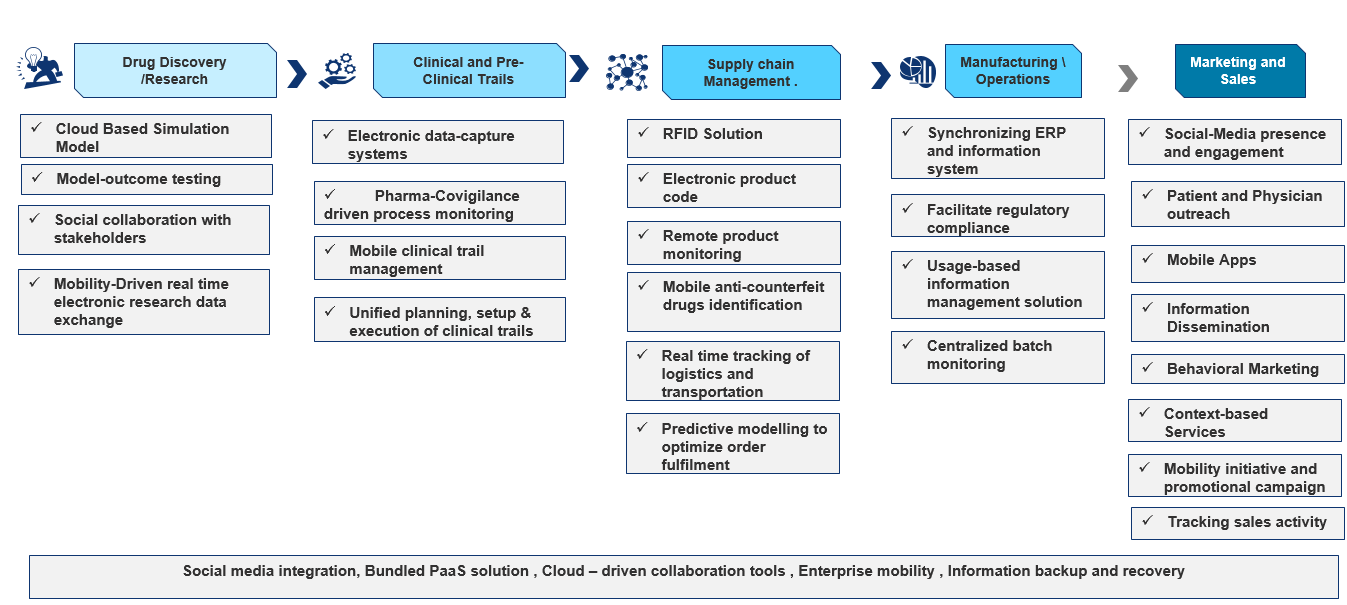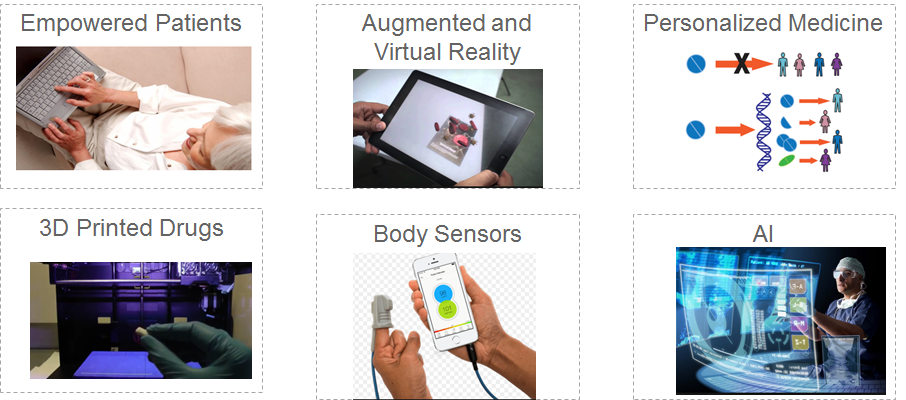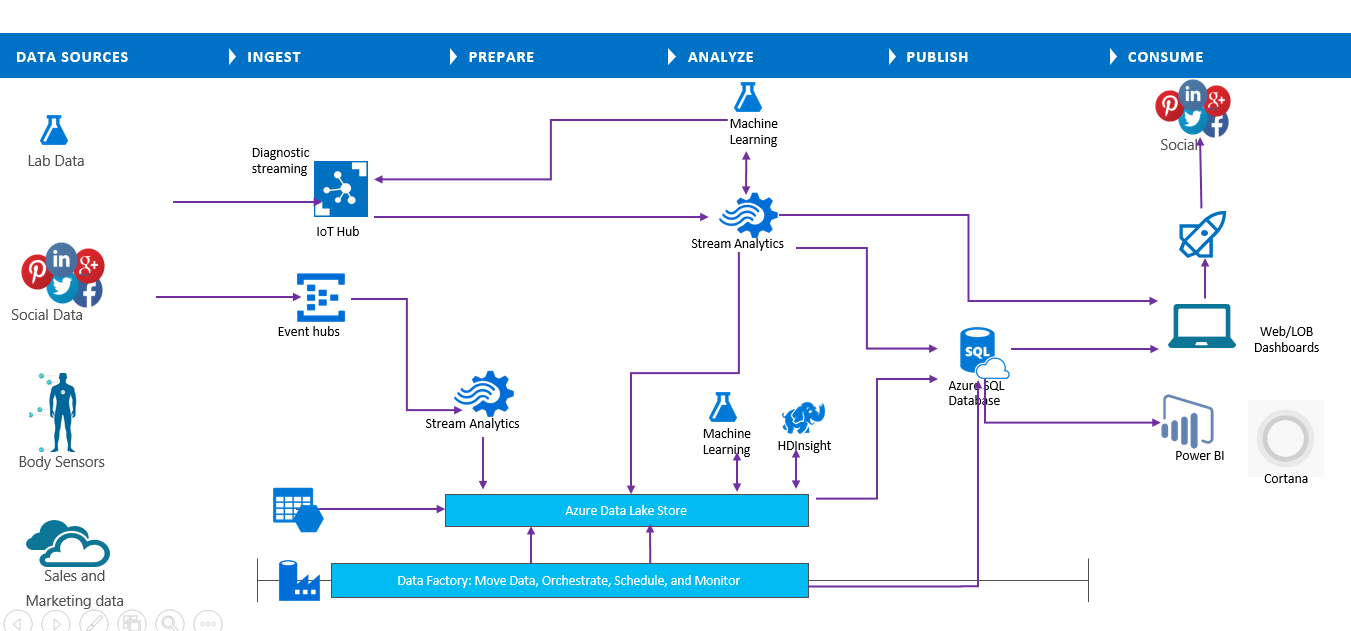Digital Transformation in the New Age of Pharma
The Internet of Things, artificial intelligence, and machine learning have immense potential for medicine. Let's see some sample use cases and architectures.
Join the DZone community and get the full member experience.
Join For FreeThere is a huge focus on digital transformation in the pharmacy industry that extends across the pharma value chain — R&D, manufacturing, supply chain management, sales, marketing and patient care.
The digital revolution is enabling new models of collaboration in research and efficiency in operations to create disruptive “beyond the pill” solutions that allow patients and consumers to better manage their medical conditions.
Meaningful insights can be drawn, empowering intelligent decision-making and reasoning on the huge amount of electronic data that is generated as patient records, etc., and by leveraging AI algorithms.
Critical to the digital transformation of modern healthcare has been the rise of the Internet of Things. Healthcare IoT devices allow for more connected, remotely managed healthcare equipment that can directly feed data not only into individual treatment plans and patient records, but into larger AI-driven healthcare analytics systems.

Figure: A sample digitized pharma value chain
Digital Transformation in the Pharma Value Chain

Figure: Key transformations in the contemporary pharma world
R&D
Clinical Trials
- R&D can be improved by bringing real-time technology to bear on clinical trials, resulting in better productivity, inventory levels, and service levels.
- Machine learning can be used in applying advanced predictive analytics in identifying candidates for clinical trials that could draw on a much wider range of data. It could include social media and doctor visits, as well as genetic information when looking to target specific populations, which would result in smaller, quicker, and less expensive trials overall.
Drug Development
- With AI and machine learning, drug developer researchers will have access to much more detailed analysis on real-world data, which will assist in better understanding the effects of a drug.
- Researchers can generate novel drug candidates by leveraging a convolutional neural network trained on a huge amount of data.
Drug Discovery
- It can take up to 15 years to translate a drug discovery idea from initial inception to a market-ready product. Picking the protein target, developing assays to measure activity at the target, and screening a large number of molecules to get the right molecule for the effect you want can take anywhere between two to five years.
- Machine learning can be leveraged for various use cases, which include initial screening of drug compounds to predicted success rate based on biological factors, next-generation sequencing, precision medicine, etc.
- Useful insights can be drawn in real time from commercial, scientific, and regulatory literature. That allows researchers to identify competitive white space, eliminate blind spots in research, and discover disease similarities by phenotype for clinical trial design.
Epidemic Outbreak Prediction
ML and AI technologies can be leveraged to monitor and predict epidemic outbreaks around the world based on data collected from satellites, historical information on the web, real-time social media updates, and other sources.
Manufacturing
- Improved operations. Downtime can be reduced significantly by improving overall equipment effectiveness (OEE), automatic corrective actions leveraging solutions and analytics that can integrate data, transforming information into actionable metrics, machine-to-machine communication, and by using machine-learning algorithms.
- Improved manufacturing cost efficiencies and productivity gains. 3D printing can result in significantly lower costs while advanced robotics and augmented reality will provide innovative solutions in human-machine interaction and automation.
- Improved safety. The safety and efficacy of drug products can be improved by maintaining specific storage conditions and providing extended visibility into shop-floor activities to enable making informed decisions that can improve equipment effectiveness.
Supply Chain Management
End-to-end supply chain integration. Organizations can leverage AI, ML and cloud computing to develop globally integrated supply chain networks, making it much easier to link all players through a single integrated network.
Real-time analytics and insights. AI and ML can be leveraged to provide real-time insights across the value chain, enabling sales and operations leaders to make dynamic decisions in response to changing conditions by leveraging data transmitted by sensors throughout the entire supply chain. That leads to shorter lead times, better planning accuracy, and reducing stock outages.
Better patient communication. Digitalization will help in improving customer experience by providing more user-friendly patient portals, apps, and online communities.
Connected healthcare. Pharma companies are using digital technology to provide reliable access to patient data in the real world by leveraging AI. The concept of the connected human being given personalized care and improved diagnostics is one long-foreseen by science fiction. Since wearables have entered the market, the idea of ongoing measurement has seemed less fanciful. Indeed, the ubiquity of the smartphone now gives the prospect of reliable access to patient data in the real world.
Radiology and radiotherapy. Help develop machine learning algorithms capable of detecting differences in healthy and cancerous tissues to help improve radiation treatments.
Smart electronic health records. Document classification (sorting patient queries via email, for example) using support vector machines and optical character recognition (transforming cursive or other sketched handwriting into digitized characters) are both essential ML-based technologies in helping advance the collection and digitization of electronic health information. MATLAB’s ML handwriting recognition technologies and Google’s Cloud Vision API for optical character recognition are just two examples of innovations in this area.
Better Disease Assessment and Treatment
CRM systems can achieve a single customer view, and digital communication channels can provide access to samples and resources (for HCPs and patients), customized medicine, diagnoses, personalized treatment or medicine, or more effective treatment based on individual health data. Meanwhile, paired with predictive analytics for ML, it can also be used for remote monitoring and real-time data access for increased safety.
Reference Architecture for a Sample Scenario
Given below is a sample scenario for lab technicians. Data is collected from the patients in real time for more accurate patient monitoring and clinical trial.

Lab data: Data collected during the drug discovery and development process
Social data: Pharma companies constantly keep tabs on the discussion happening amongst patients
Body sensors: Body sensors have come up as easy and accurate way to collect patient data both during clinical trials and patient monitoring
Sales and marketing: Field sales and marketing data are analyzed to understand patient needs and product/drug reviews. This data is also used to do predictive analytics for the supply chain.
The solution follows a service-oriented approach where each service owns a defined functionality, exposed through defined interfaces and designed to meet the quality of service required from scalability, performance, and other non-functional attributes.
Azure IoT Hub will be used for data ingestion from sensors.
Azure Event Hub will be used to transform and store data with control over what data transformations and storage are needed. An Event Hub is a gateway for an event-processing pipeline. Azure Event Hub is a highly scalable managed service capable of ingesting millions of events per second, enabling us to capture, process, and analyze massive amounts of data originating from connected devices (often IoT scenarios) and applications.
Azure Data Lake will be used to provide insights from large, complex data sets.
Azure HDInsight will be used to process unstructured or semi-structured data from web clickstreams, social media, server logs, devices/sensors, and more.
Azure SQL Database is a managed cloud database used to store the data.
Power BI will be used to provide a self-service analytics and data visualization of the data.
Cortana is a digital personal assistant to set reminders, etc.
Dashboards: Custom dashboards will be developed to display real-time insights.
Opinions expressed by DZone contributors are their own.

Comments